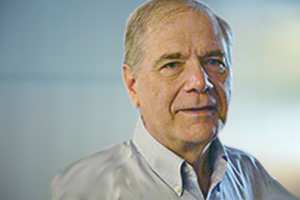The long-standing motto of the Society of Actuaries, from John Ruskin, is “The work of science is to substitute facts for appearances and demonstrations for impressions.”
We have always had the IMPRESSSION that it means our job, as actuarial scientists, is to pursue facts, and facts only. But this time, we decided to substitute our impressions with demonstrations. Mark Googled the quote.
The quote is from Mr. John Ruskin’s book, The Stone of Venice, Volume 3, page 36. The book is about Venice’s architecture. But Mr. Ruskin, as a good actuary, went on commenting on something broader, the relationship between art and science in his term. Here is the context of the quote:
VIII. Science and art are commonly distinguished by the nature of their actions; the one as knowing, the other as changing, producing, or creating. But there is a still more important distinction in the nature of the things they deal with. Science deals exclusively with things as they are in themselves; and art exclusively with things as they affect the human senses and human soul.* Her work is to portray the appearance of things, and to deepen the natural impressions which they produce upon living creatures. The work of science is to substitute facts for appearances, and demonstrations for impressions. Both, observe, are equally concerned with truth; the one with truth of aspect, the other with truth of essence. Art does not represent things falsely, but truly as they appear to mankind. Science studies the relations of things to each other: but art studies only their relations to man; and it requires of everything which is submitted to it imperatively this, and only this, what that thing is to the human eyes and human heart, what it has to say to men, and what it can become to them: a field of question just as much vaster than that of science, as the soul is larger than the material creation.
* Or, more briefly, science has to do with facts, art with phenomena. To science, phenomena are of use only as they lead to facts; and to art facts are of use only as they lead to phenomena. I use the word “art” here with reference to the fine art only, for the lower arts of mechanical production I should reserve the word “manufacture.”
Mr. Ruskin’s definitions of art and science are different from what most people would think about today. Mr. Ruskin, as part of his religious belief, believed that truth is static and universal—a bit mysterious, but there waiting for us to discover. Starting from this belief, he drew a line between art and science. Many branches of modern philosophy of science would argue otherwise.
However, none of those ideas is as surprising to me as how much I misread the quote. Before, I thought Mr. Ruskin must loathe appearance and impression. I reasoned that they are subjective, volatile, unreliable and therefore unscientific. We have to substitute them with something objective, concrete and “scientific.” Obviously, as an art historian, Mr. Ruskin had no interest to down-play “art.” Actually, he even rated art higher than science. To Mr. Ruskin, the truth already exists, and produces influence over us, over our souls. The work of science is to express this influence with facts, to substantiate the impression, not to dispute or fight against. To some extent, he was calling appearance and impressions prophets for science. In Ruskin’s time, over a century ago, we thought that facts were far more important than impressions. Yet now, we realize that perception is often more important than reality. In fact, the burgeoning science of behavioral economics is focused on exactly that issue.
The well-known example of The Economist magazine pricing (from Dan Ariely’s book, Predictably Irrational) is one notable example:
When given the choice between two subscription arrangements, the online version for $59 and the print plus online version for $125, over 2/3 of a group of MIT students chose the $59 online version. Yet, when a print-only version for $125 was added to the mix of choices, a similar group overwhelmingly (over 85 percent) chose the $125 print plus online version. The clear facts were that the print plus online version still cost $66 more than the online version, but the inclusion of an obviously less attractive option made it seem so much more attractive.
Every day we make similar choices based on impressions rather than facts. We might drive an extra mile to purchase the gasoline at $.05 less per gallon (for a total savings under a dollar), but we might not consider that long a trip to save $10 on a $500 television set.
We will spend hours to come up with a few more deductions for our tax return, yet expend little more than water cooler conversation time deciding which candidate to vote for that might prevent another trillion-dollar war expense.
Several years ago, most life insurance companies in the United States were headed by actuaries. Now, we are becoming a minority in the corporate suite, as other quants (MBAs, CFAs, CIAs and a host of other As), with perhaps more training in the soft skills of perception and networking are rising to positions of more prominence in senior management. Did we misunderstand Mr. Ruskin to our detriment?
We have studied long and hard to become experts on the operational risks associated with life insurance. On the liabilities side, these include the obvious ‘big three’ study note topics of mortality, interest and expenses. Our models do an excellent job of quantifying these types of risks. Stuart Greenbaum, Dean Emeritus of the Washington
University School of Business, looks at the risks that can threaten the very existence of a company, risks that go beyond operational risks—existential risks.
Decades ago, as part of General American Life Insurance Company, we saw a $30 billion company go into receivership because it did not have the foresight to develop a mitigation strategy for an existential risk outside of its actuarial models. The risk was that of a ratings downgrade. Moody’s, a major ratings service, dropped the rating on General American Life by one point. The result was that their rating crossed a threshold and forced the pension fund managers who held GICs (Guaranteed Investment Contracts) from General American to divest and ask for their money back. The GICs had a seven-day provision to return the money. Since the company could not liquidate enough assets to raise $6 billion in seven days, it was forced to default and thus was taken over by the state insurance regulators.
If the actuaries at General American had been able to anticipate the warning signs of this existential risk—even by a few weeks—they may have sold off other assets in order to raise the requisite cash. They may have secured letters of credit to cover the potential crisis. They may have sold off some of this business to other companies … perhaps to your company! At that time, this was still profitable business. That was not the issue. Could your company raise 20 percent of its assets in seven days?
One might argue that since the GICs were a minority of the business, that General American was vulnerable to impressions (a rating downgrade) disproportionate to the facts of the situation. Quantitative models might or might not be adequate to project existential risks or things like impressions.
Mr. Ruskin prophetically considered the soft skills of art at least as important as the ‘hard facts’ of science. Impression, in his term, is not superficial feeling. Appearance is not passing shadow. In today’s business environment, they are more properly called big picture, business insight, executive judgment, gut feeling. Did this 100-year-old motto hound us so much so that we are busy in crunching data, building more and more complex models to substitute demonstrations for impressions? Following the spirit of the quote, actuaries have built a reputation of being thorough, reliable and knowledgeable. On the flip side, this reputation also depicts a rigid, boring, tunnel minded actuary. Is it time to move forward, making sense of the piles of numbers we generated, leaving an impression by communicating facts? In other words, is it time for us to substitute appearances for facts and impressions for demonstrations?
We both earned diplomas from the SOA. Perhaps we both had a very wrong impression of the quote printed at the bottom. Which interpretation was perception, and which was reality? You can find different formats of Mr. John Ruskin’s book, The Stone of Venice at http://www.archive.org/details/stonesofvenice03ruskuoft.
Posted with permission of the ©Society of Actuaries, Schaumburg, Illinois.




